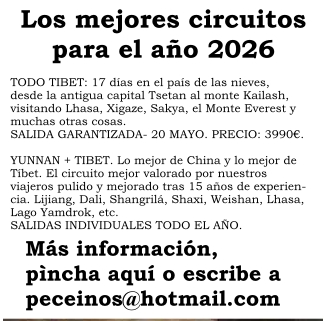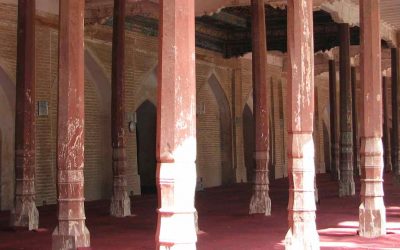The Dong are one of the minorities of China with a large population. According to the census of the year 2000 their population was 3,000,000 people.
They live mainly in Guizhou Province (approximately 1,800,000 people), along a fringe of flat lands that cross the province from north to south. There is also a big Dong population in the southern part of neighboring Hunan Province (about 900,000), and more than 200,000 persons in Guangxi Zhuang Autonomous Region, and a few thousand in Hubei Province (Enshi Prefecture).
The Dong, as do most of the peoples related to them, live near the rivers or in hills generally not of great height. They mainly cultivate rice. They raise domestic animals, especially hens and pigs. The exploitation of the forests, which holds a special spiritual relationship with the Dong, is an activity of economic importance.
They refer to themselves as «Kam.»
It is generally considered that there are two quite different types of Dong, the Dong of the North and the Dong of the South.
There are important linguistic and cultural differences between them. In general those of the north have received more influences from mainstream Chinese culture, while those of the south better conserve the Dong traditions. The typical monuments of the Dong, such as Drum Towers, Bridges of Rain and Wind, and the Temples of the Goddess Mother Sama, are all characteristic of the Dong of the South.
Their language belongs to the Sino-Tibetan family, Dong Dai branch, Zhuang Dong sub-branch. It has two main dialects, understandably called the northern and southern dialects, whose speakers cannot understand each other easily. Each one of these dialects has in turn three clearly differentiated local sub-dialects.
After 1958 an alphabet was invented for their language, but it has not been widely used. Before 1958, they used Chinese characters adapted to their own language.
More posts on China ethnic groups
Las historias de Beijing de David Kidd
Las historias de Beijing de David Kidd Este libro narra algunos sucesos acaecidos en una familia aristocrática durante los años en los que China acabó con su historia tradicional y se convirtió en un país comunista. El autor llegó a Pekín como profesor de inglés 2...
¿Y si la ciencia moderna se originó en la Ruta de la Seda?
¿Y si la ciencia moderna se originó en la Ruta de la Seda? En una de sus obras más sorprendentes, Warriors of the Cloisters: The Central Asian Origins of Science in the Medieval World, Christopher Beckwith, como el título de la obra indica, propone que la ciencia...
Gloria de Xian en la dinastía Tang
Gloria de Xian en la dinastía Tang Todo visitante a la ciudad de Xian ha escuchado decir que la ciudad alcanzó su máximo esplendor durante la dinastía Tang, pero dado que hoy en día apenas quedan de esa dinastía la Gran Pagoda de la Oca, la Pequeña Pagoda de la Oca y...
La heroína de la familia Li – Un cuento chino
La heroína de la familia Li Las húmedas tierras bajas al norte del monte Yong estuvieron ocupadas en otro tiempo por una gigantesca pitón de unos tres pies de grosor y 70 u 80 pies de largo. Su presencia ahuyentaba a los nativos de los alrededores y provocaba muertes...
El Perro Casamentero – Un cuento chino de magia y misterio
El Perro Casamentero - Un cuento mágico chino Durante la dinastía Han, Huang Yuan, del principado de Taishan, abrió su puerta una mañana y encontró un perro negro sentado fuera vigilando, como si fuera de la casa. Huang lo ató a una correa y lo sacó de caza con unos...
Algunos libros y estudios sobre las religiones de China
Algunos libros y estudios sobre las religiones de China Blodget, Henry. The Worship of Heaven and Earth by the Emperor of China. Journal of the American Oriental Society, Vol. 20 (1899), pp. 58-69 Una descripción clara y no demasiado detallada, lo justo, de cómo se...







